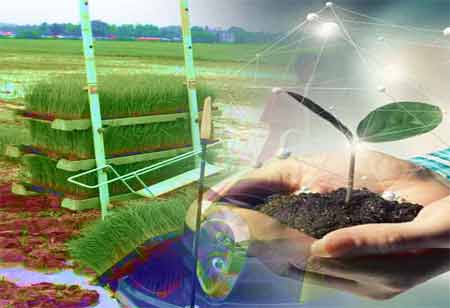Thank you for Subscribing to Agri Business Review Weekly Brief
Artificial Intelligence Solutions Shaping the Future of Agriculture
How AI is Paving the Way for the Future of Agriculture.

By
Agri Business Review | Friday, January 31, 2025
Stay ahead of the industry with exclusive feature stories on the top companies, expert insights and the latest news delivered straight to your inbox. Subscribe today.
How AI is Paving the Way for the Future of Agriculture
FREMONT CA: Artificial Intelligence (AI) is quickly transforming the agricultural landscape, revolutionizing traditional farming practices and boosting productivity in an industry facing the dual challenges of climate change and a growing global population. Through the application of advanced technologies like machine learning, computer vision, and predictive analytics, AI enables farmers to optimize key aspects of agricultural production. From improving crop management to enhancing supply chain efficiency, these innovations help farmers make more informed decisions, increase yields, and reduce resource waste.
AI-driven tools enable precision farming techniques for more accurate soil health monitoring, weather patterns and pest activity, leading to informed decision-making and resource conservation. Below are some of the applications of AI in agriculture.
Optimising Automated Irrigation Systems: Automated irrigation systems benefit from AI algorithms that manage crop irrigation efficiently. By integrating IoT sensors to monitor soil moisture levels and weather conditions, these algorithms can make real-time decisions on water allocation. This approach conserves water and also promotes sustainable farming practices. AI enhances plant growth in smart greenhouses by adjusting temperature, humidity and lighting according to real-time data inputs.
Detecting Leaks or Damage to Irrigation Systems: AI plays a significant role in identifying leaks within irrigation systems. Algorithms can detect potential leaks through water flow or pressure changes by analysing data for patterns and anomalies. Incorporating weather data with crop water requirements helps identify excessive water usage. Automated leak detection systems provide timely alerts, enhancing overall water efficiency and aiding resource conservation.
Crop and Soil Monitoring: AI assists in monitoring crop health and soil conditions, addressing nutrient imbalances that can negatively impact growth. AI gathers accurate data on soil conditions, helping farmers combat crop diseases by utilising advanced computer vision models. Sensors can trigger automatic environmental adjustments based on detected growth conditions, facilitating proactive crop management.
Detecting Diseases and Pests: AI technology is instrumental in identifying diseases and pests affecting crops. AI can detect issues such as mould or insect infestations by employing computer vision to analyse images. Coupled with alert systems, this capability allows for rapid responses to protect crop health, thereby preventing the spread of diseases.
Monitoring Livestock Health: AI enhances livestock health monitoring through remote observation. Technologies such as drones and cameras facilitate the detection of unusual behaviour in animals, allowing for timely interventions. Insights from AI can inform farmers about the effects of diet and environmental conditions on livestock, contributing to improved animal welfare and productivity.
Yield Mapping and Predictive Analytics: Yield mapping employs machine learning algorithms to analyse extensive datasets in real time, aiding farmers in understanding crop patterns. This predictive analysis assists in planning and resource allocation, ensuring optimal planting strategies and enhancing the return on investment.
Automatic Weeding and Harvesting: AI applications extend to weeding and harvesting tasks through computer vision. By analysing the characteristics of leaves, AI can differentiate between crops and weeds, enabling robotic automation for these processes. The adoption of such technology promises increased efficiency in agricultural operations.
Sorting Harvested Produce: After harvest, AI contributes to the sorting of produce, which is traditionally a labour-intensive task. With computer vision, AI can identify pests and diseases in harvested crops and grade produce by size, shape and colour. This technology streamlines sorting processes, allowing for quicker categorisation and improved market readiness.
As the industry continues to evolve, adopting AI-driven innovations will be crucial in meeting the demands of a growing population while addressing pressing global issues like food security and sustainability. Embracing these advancements supports farmers' daily operations and ensures a more sustainable and secure food supply for future generations.





